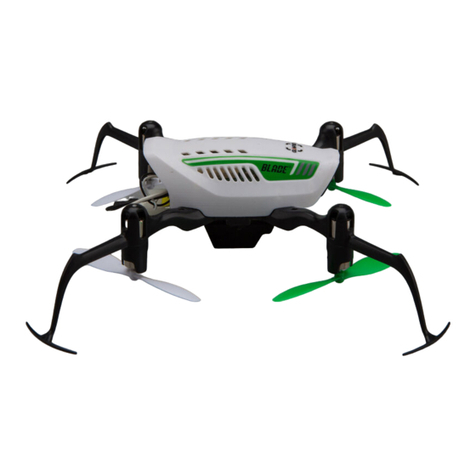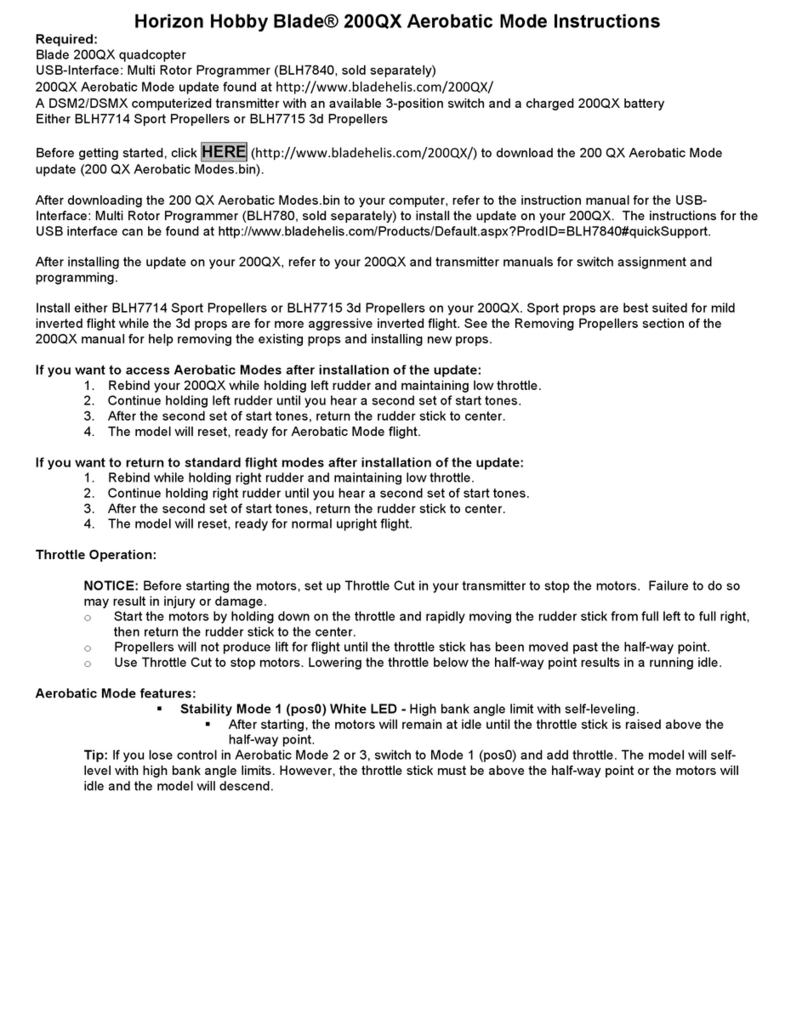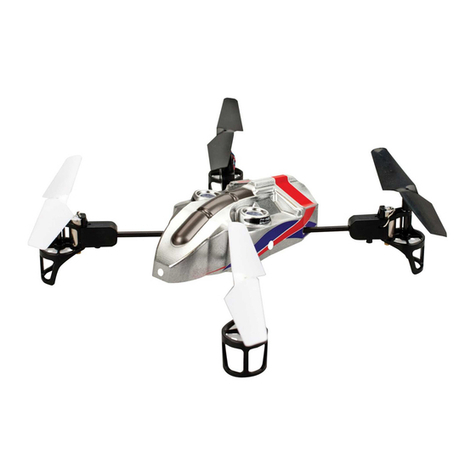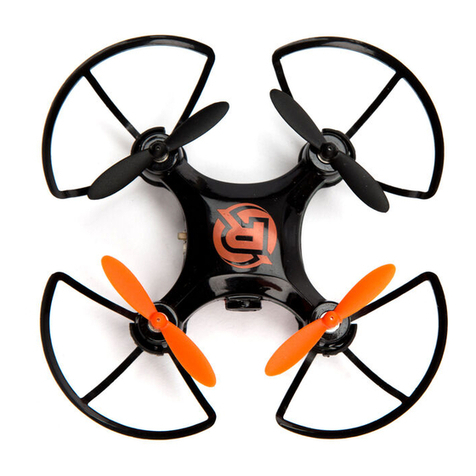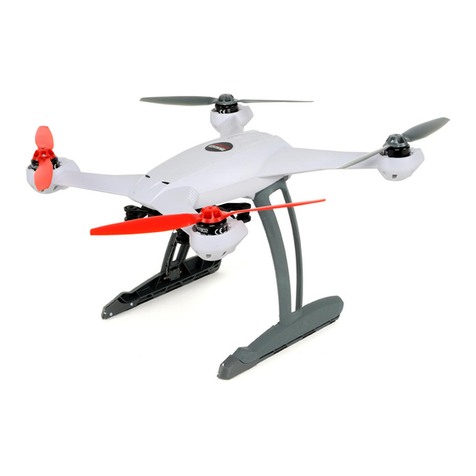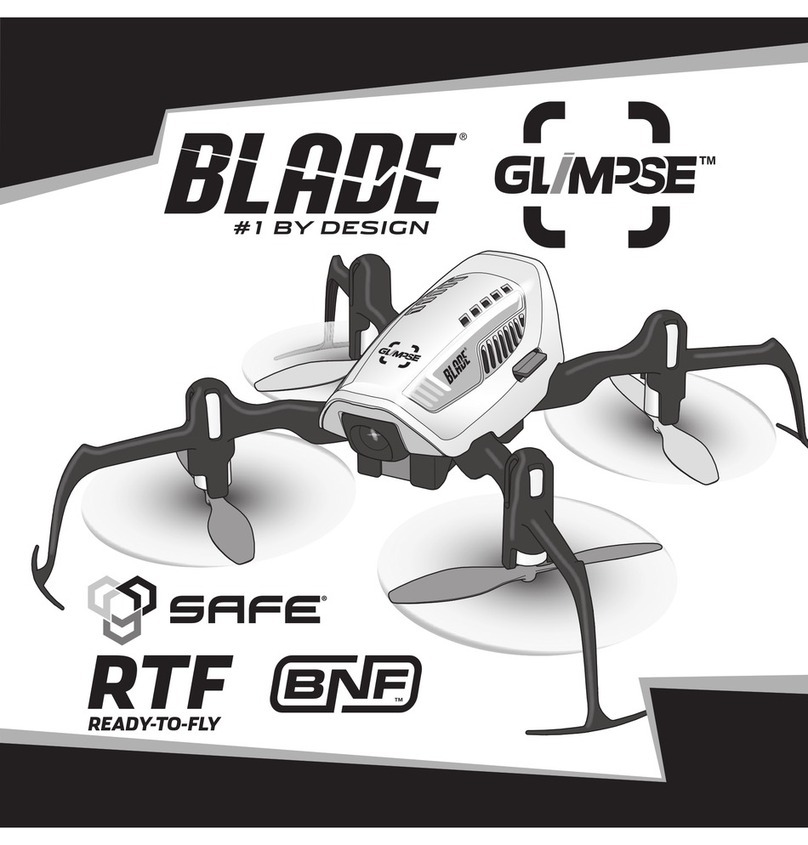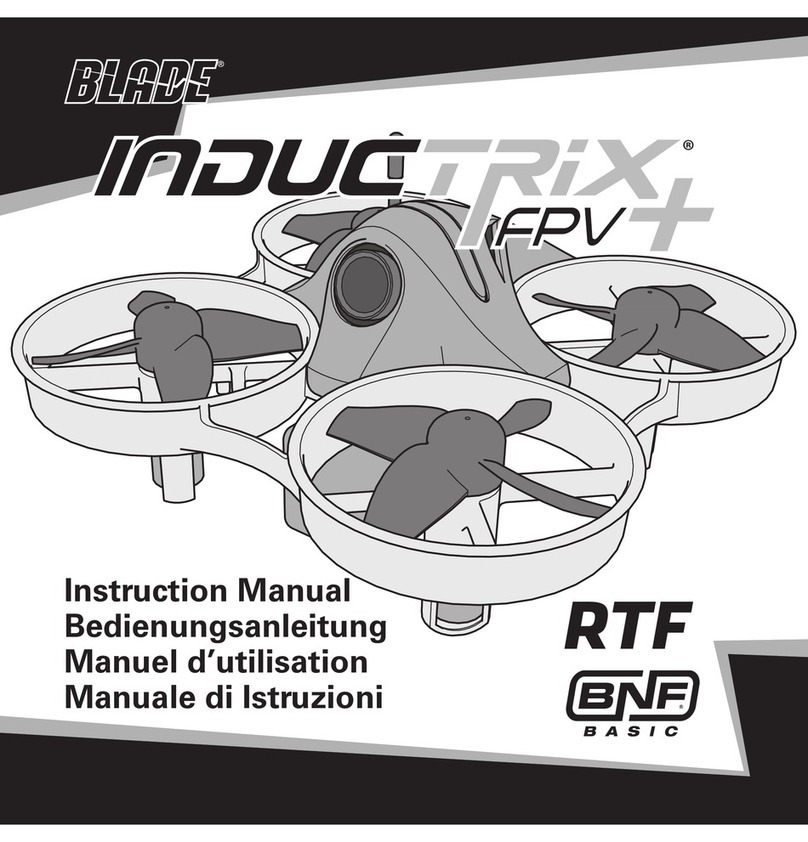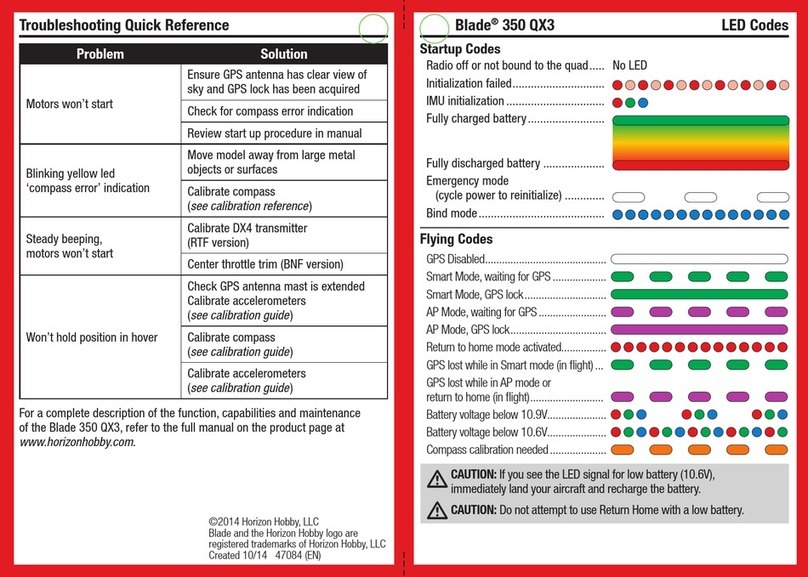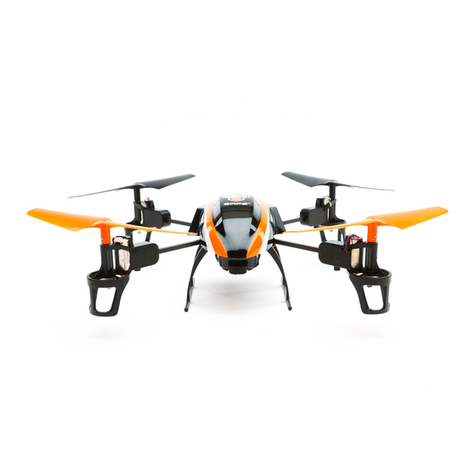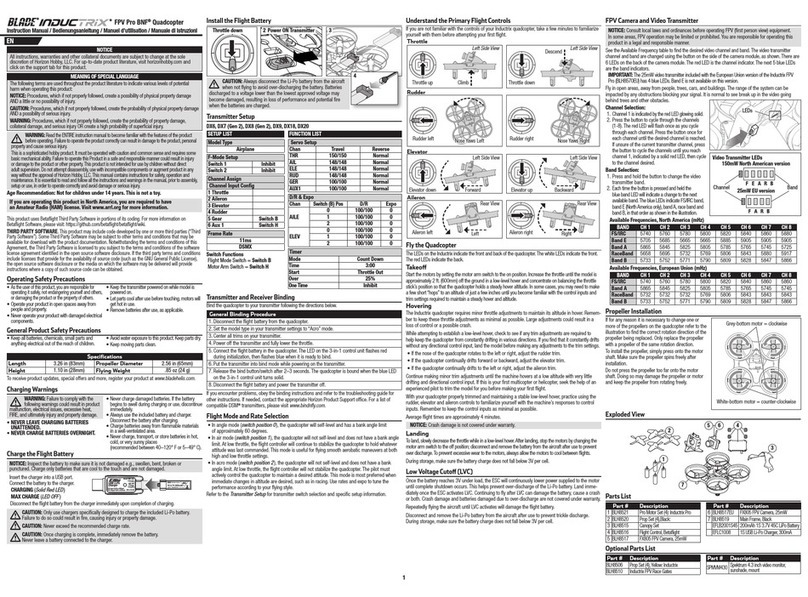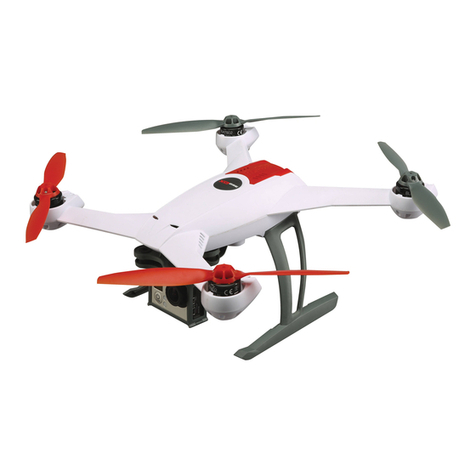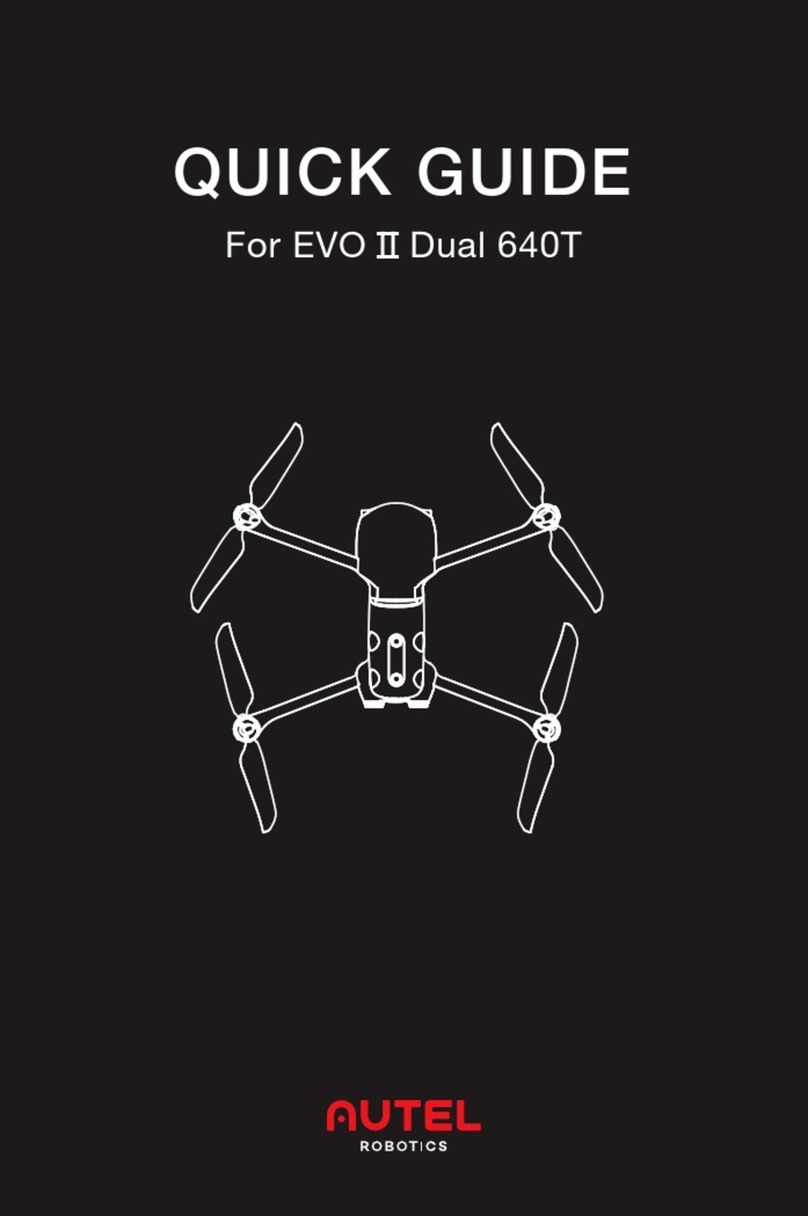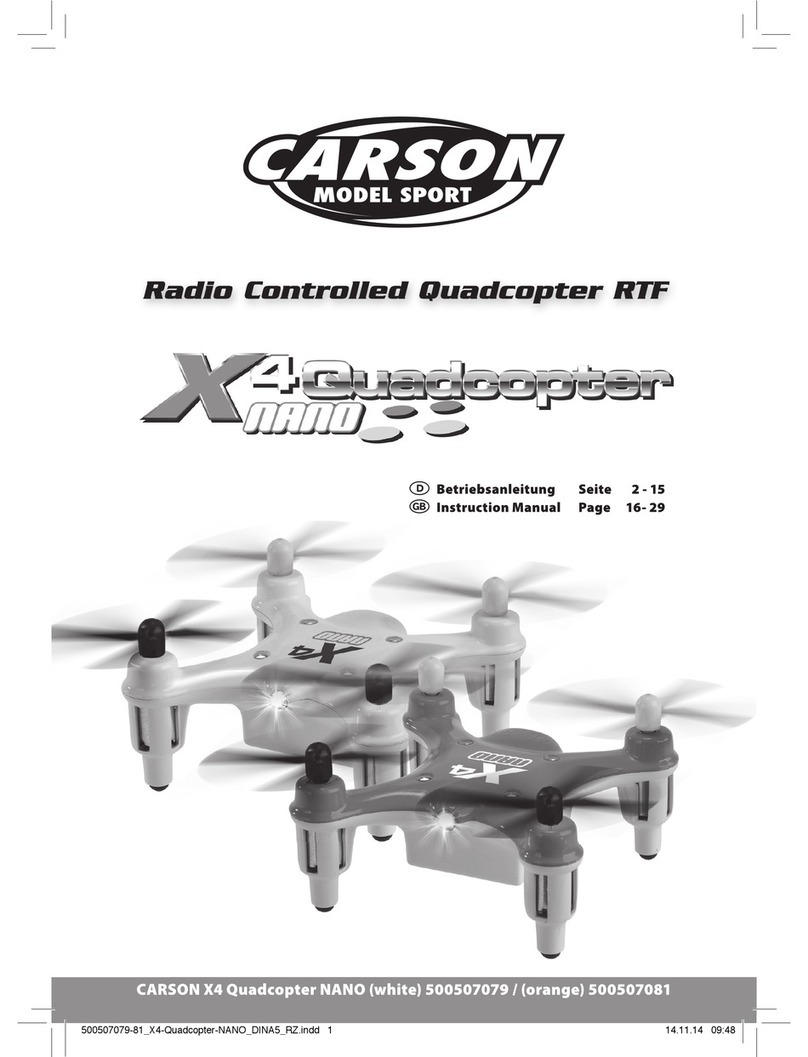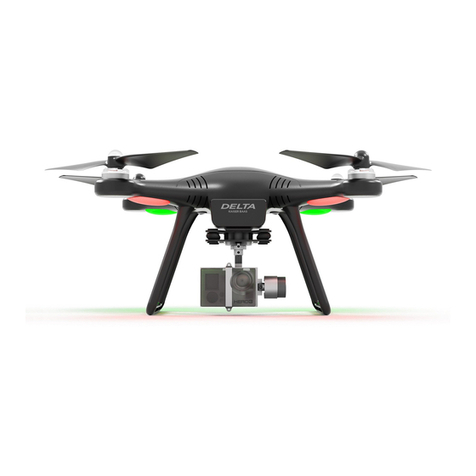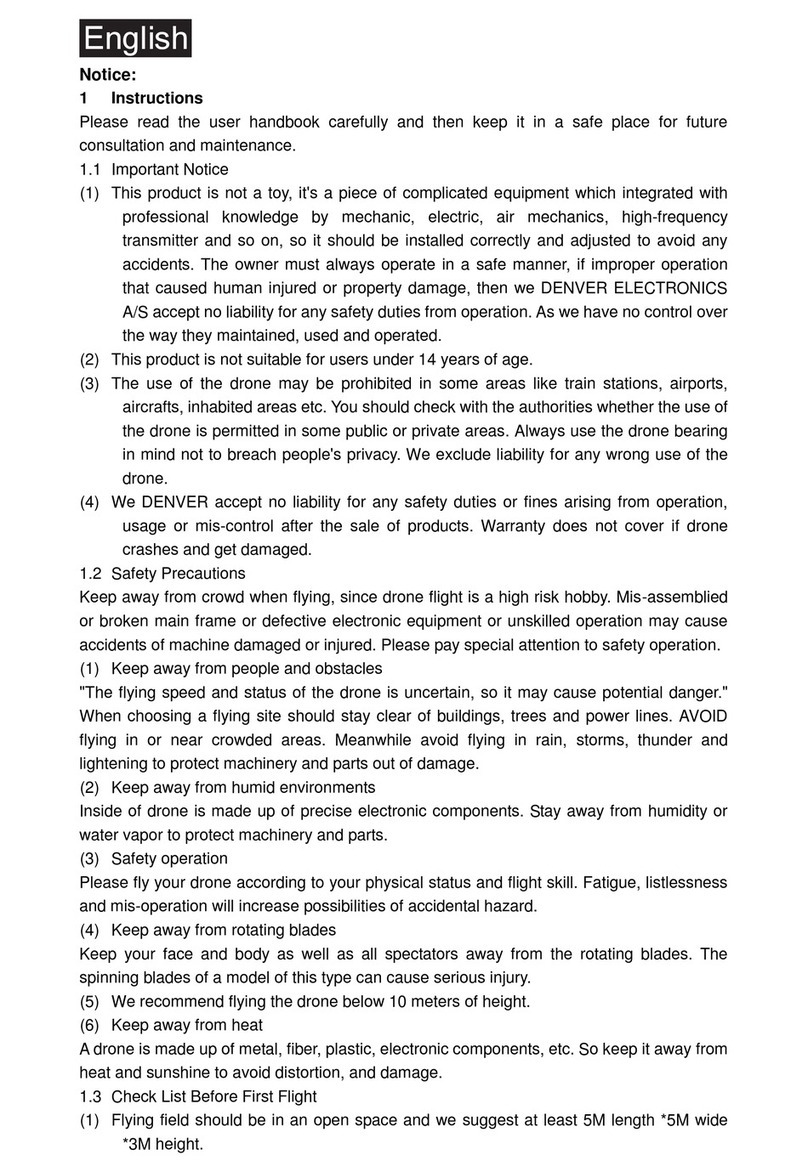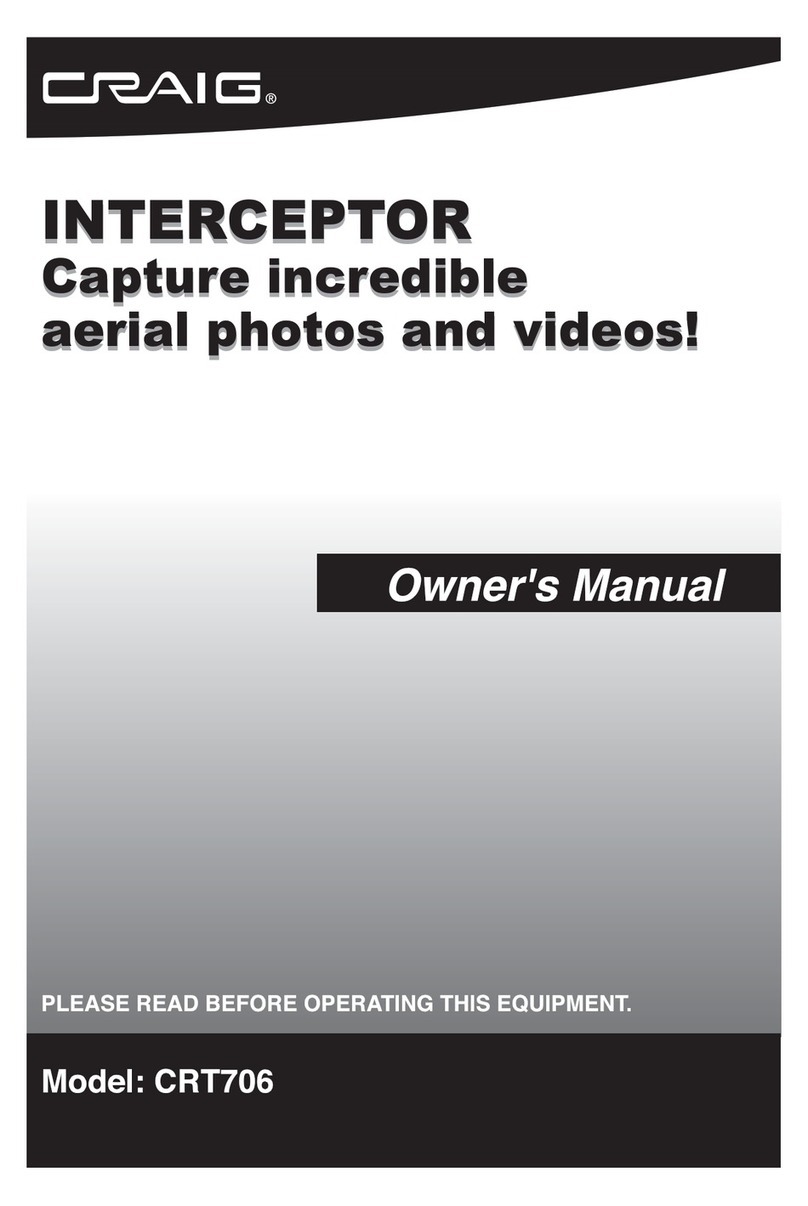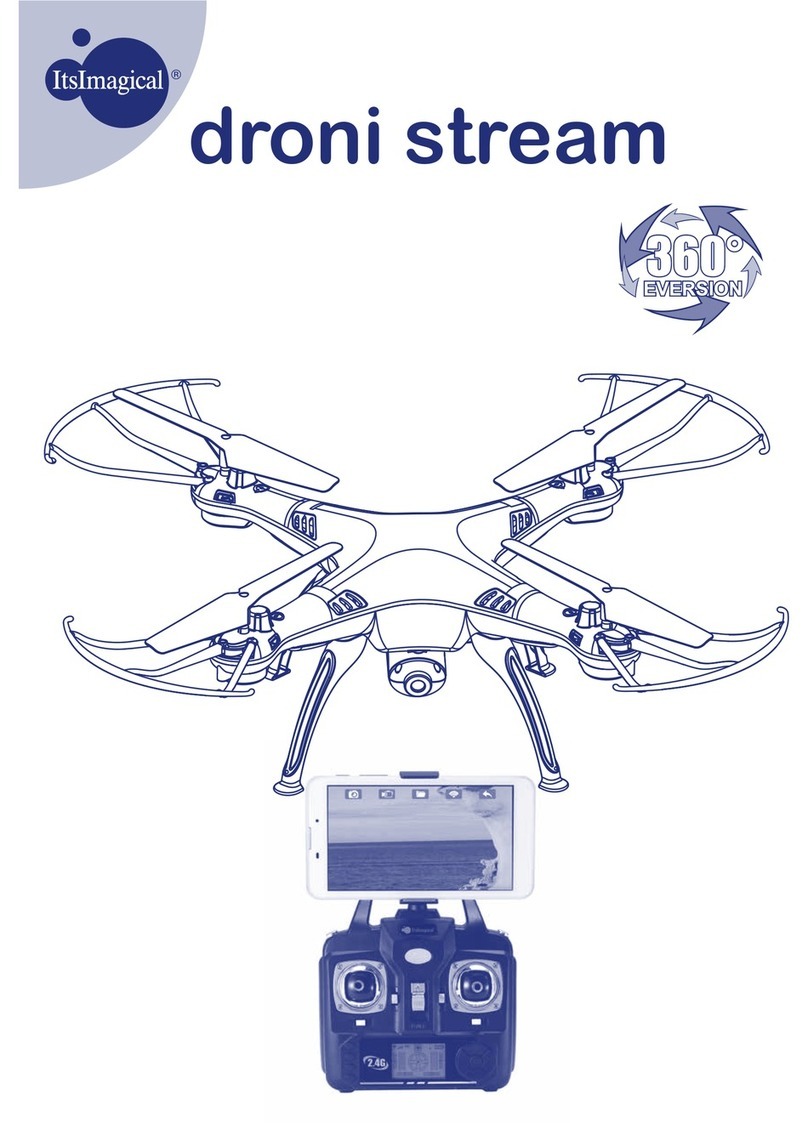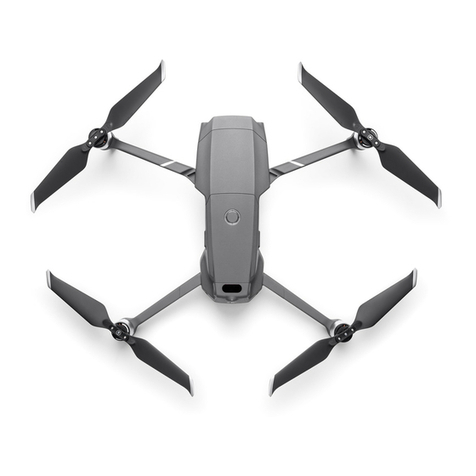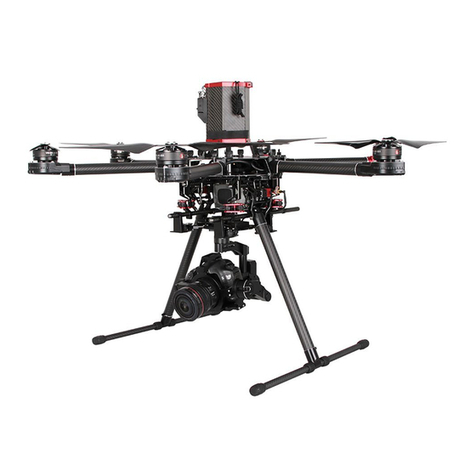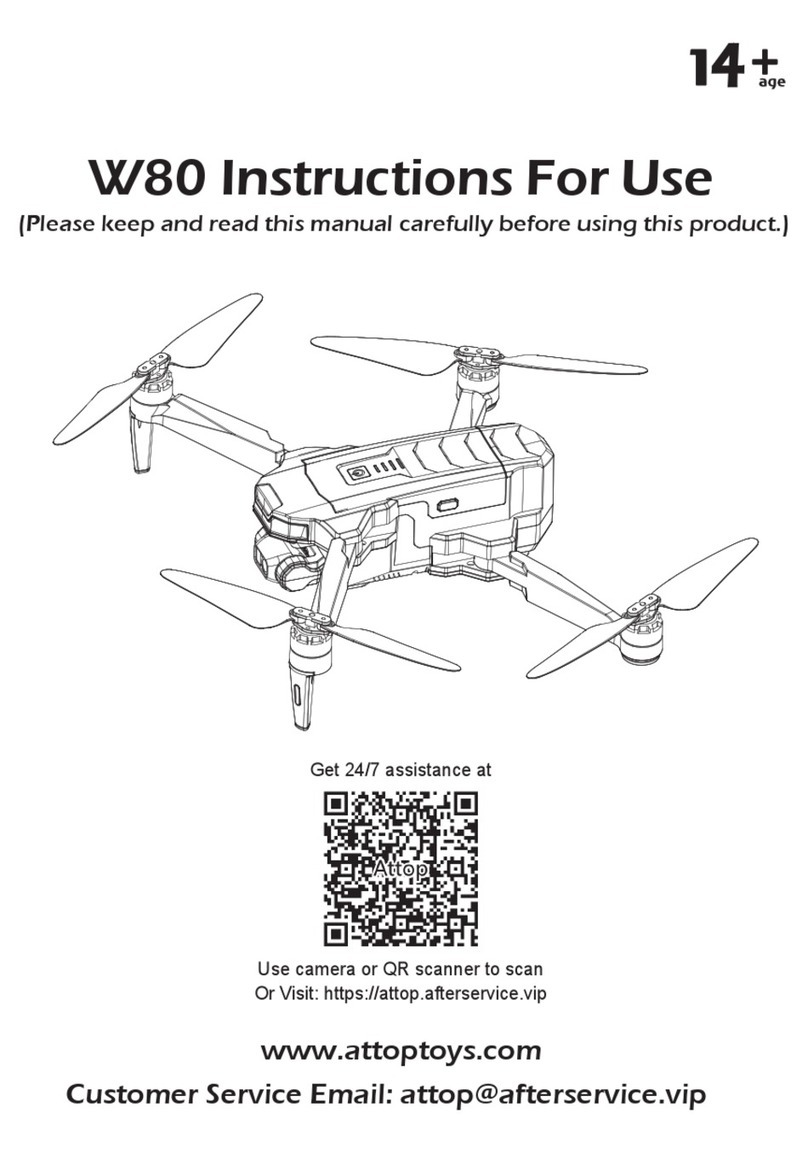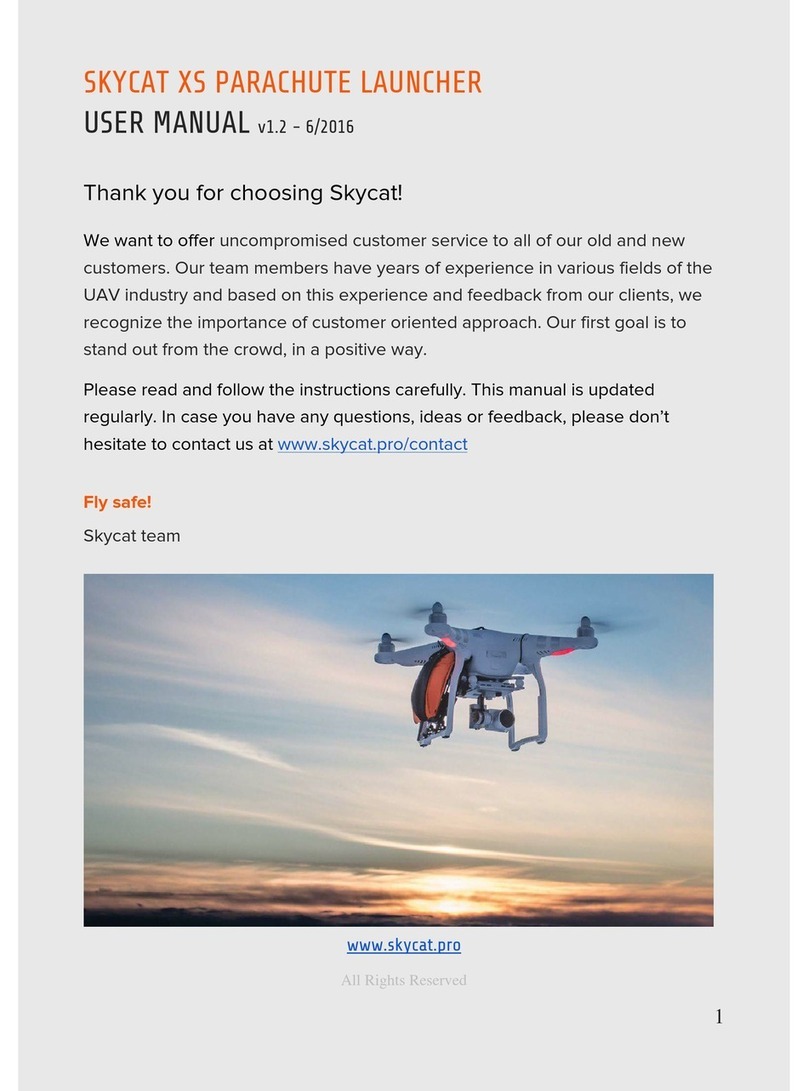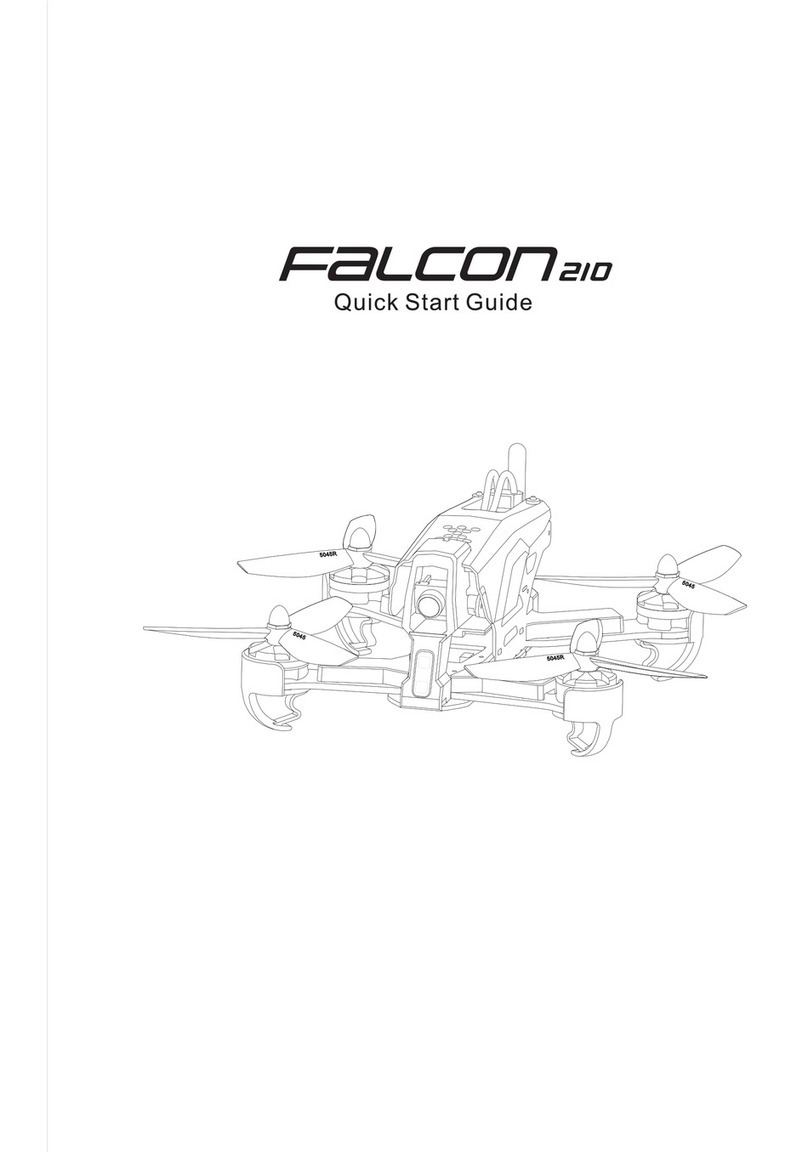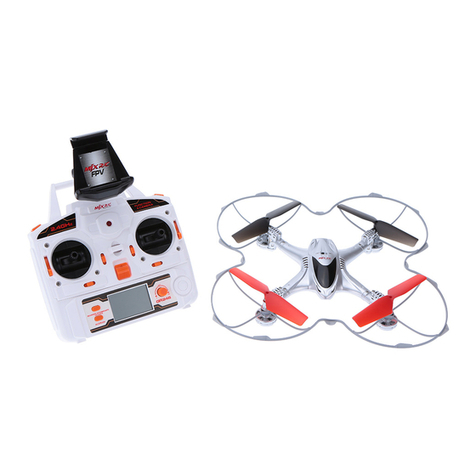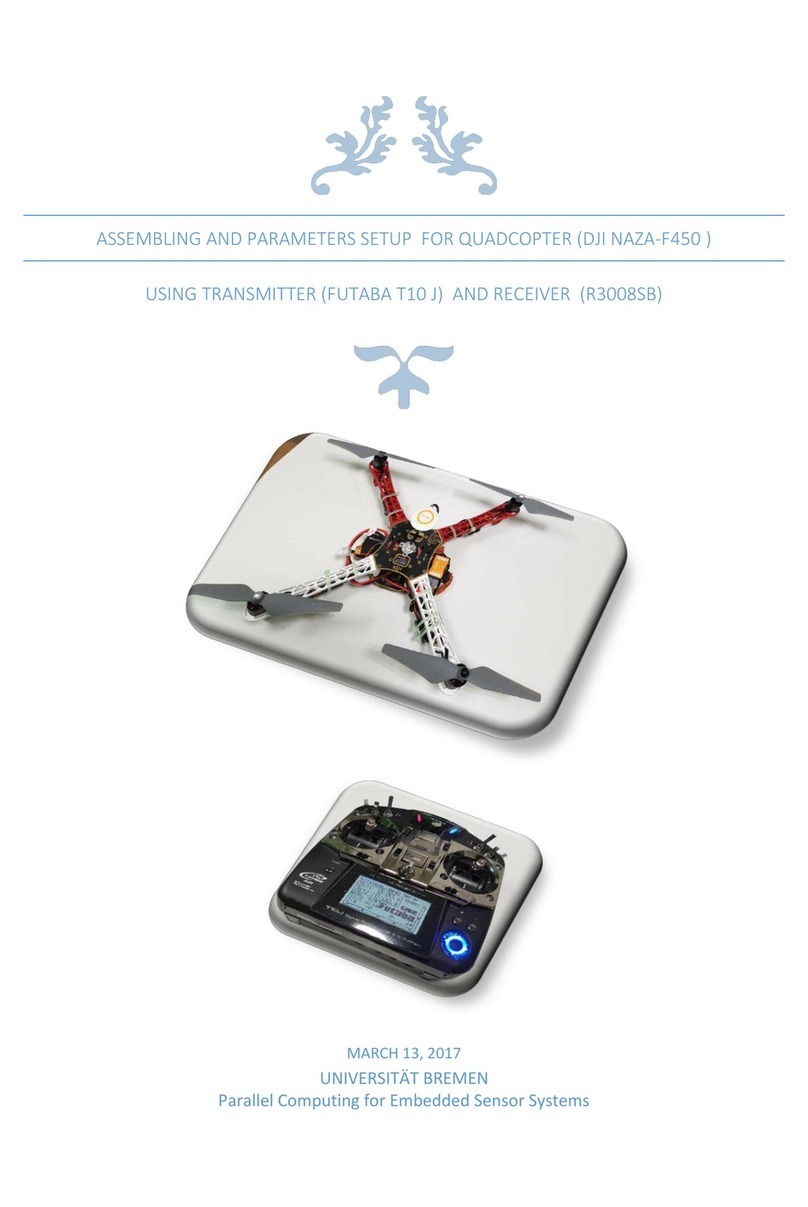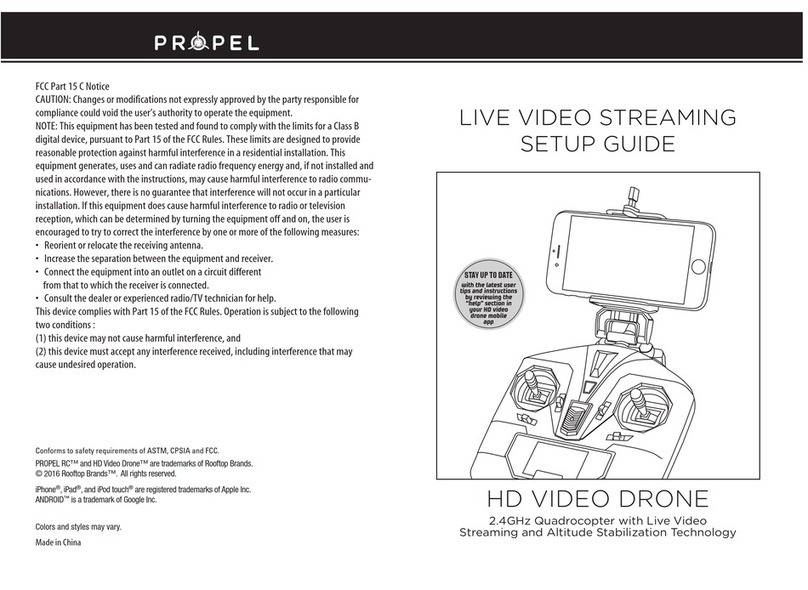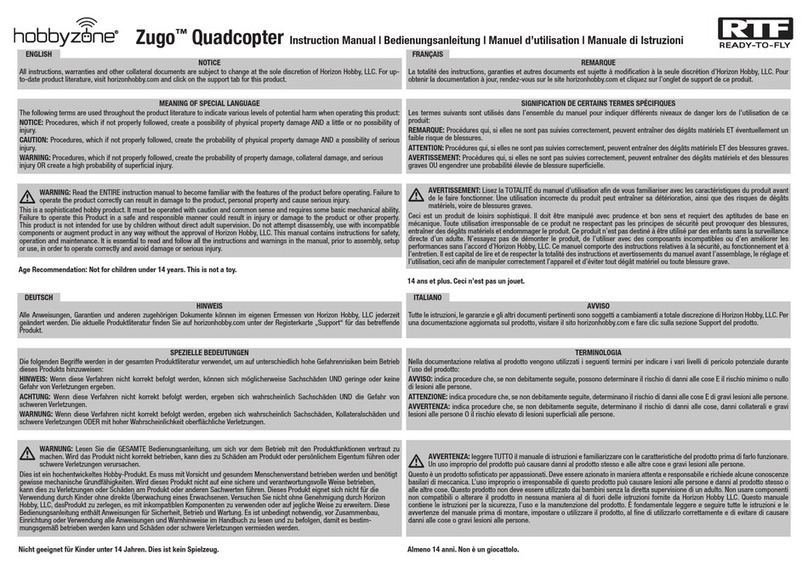10
EN
LED Codes
Startup Codes
Flying Codes
Radio off or not bound to the quad .......................................
Initialization failed................................................................
IMU initialization ..................................................................
Fully charged battery ...........................................................
Fully discharged battery.......................................................
Emergency mode (cycle power to reinitialize).......................
Bind mode ...........................................................................
GPS Disabled .......................................................................
Smart Mode, waiting for GPS ...............................................
Smart Mode, GPS lock .........................................................
AP Mode, waiting for GPS.....................................................
AP Mode, GPS lock...............................................................
Return to home mode activated ...........................................
GPS lost while in Smart mode (in flight)................................
GPS lost while in AP mode or return to home (in flight).........
Battery voltage below 10.9V ................................................
Battery voltage below 10.6V ................................................
Compass calibration needed ................................................
CAUTION: If you see the LED signal for low
battery (10.6V), immediately land your aircraft
and recharge the battery.
CAUTION: Do not attempt to use Return Home
with a low battery.
No LED
GPS Functionality
To acquire a reliable GPS signal, it is important the 350 QX3 has a clear view of
the sky. Obstructions that can affect the aircraft’s ability to acquire an acceptable
signal include:
• Flying close to or around tall/big buildings
• Flying under dense vegetation
• Flying indoors or under a structure
If you cannot acquire a GPS lock at startup, the motors cannot be started in either
Smart Mode or AP Mode. You will have to re-bind the quadcopter with the GPS
functions turned off to allow you to start the motors for flight (see the Binding
section). It is not possible to use Smart Mode without having GPS enabled. If the
350 QX3 is initialized with GPS disabled, it will default to AP Mode without position
hold, but will still be capable of altitude hold.
If you lose the GPS signal while flying, the aircraft will not have Stick Relativity, the
SAFE Circle™feature, Position Hold or Return Home functions available. We recom-
mend maneuvering the 350 QX3 by steering with forward elevator and rudder only
if GPS signal is lost.
CAUTION: Do not attempt to fly the 350 QX3 with GPS enabled while
indoors or in a location where the GPS signal is known to be poor, as loss
of signal could result in a crash.
GPS Functions
(see the Binding section for turning GPS functions ON and OFF )
With GPS ON
• If the 350 QX3 took off with GPS lock and a home position set, when Return
Home mode is activated the quadcopter will fly back to the start position
(maintaining altitude along the way), then reduce altitude to land.
• If the 350 QX3 loses GPS lock while flying in Smart, AP or Return Home
mode, the LED will flash green, purple or red, depending on which flight mode
you are currently using. The 350 QX3 will default to a stable flight mode with
similar control response to AP Mode without the availability of position hold.
• If the 350 QX3 deviates too far from its intended GPS path when in Return
Home mode, it will descend using the barometric pressure sensor to maintain
the descent rate.
• Once the 350 QX3 has landed in Return Home mode, it will stop the motors.
With GPS OFF
• The LED will show solid white.
• The flight mode available will be similar in control response to AP Mode
without the availability of position hold.
• Altitude hold will function normally.
Loss of GPS Signal
If the 350 QX3 loses GPS signal in flight, it will respond according to the
following conditions:
Smart Mode: (Green flashing LED)
If the 350 QX3 loses GPS signal in flight while in Smart Mode the LED will
flash green. The stick relativity feature of Smart Mode will not function. The
350 QX3 will follow the control stick input direction relative to the position and
orientation of the aircraft rather than the position of the pilot, similar to the
control response in AP Mode. Return home will not function. The aircraft will
still use the pressure sensor to maintain altitude and control rate of descent.
If GPS signal is reacquired, after receiving 5–10 seconds of reliable GPS
signal, the Smart Mode functions return.
AP Mode: (Purple flashing LED)
If the 350 QX3 loses GPS signal in flight while in AP Mode the LED will flash
purple. The quadcopter will not enter GPS position hold when the right stick is
returned to center. Return home will not function. If GPS signal is reacquired
after receiving 5-10 seconds of reliable signal, AP Mode functions return.
Loss of Transmitter Signal
If the transmitter signal is lost for any reason, the 350 QX3 will respond
according to the following conditions:
• If the motors are stopped, the 350 QX3 will disarm.
• If the motors are turning but the 350 QX3 is not flying, it will stop the motors
and disarm.
• If the 350 QX3 is flying and has a good GPS lock with a home position set, it
will activate the Return Home function (rapid red flashing LED) upon the loss
of the transmitter signal.
• If the compass is faulty, not connected or if there is no GPS lock,
the 350 QX3 descends slowly when the transmitter signal is lost.
• If the pressure sensor is not working, the 350 QX3 reduces power to
control the decent when the transmitter signal is lost.
